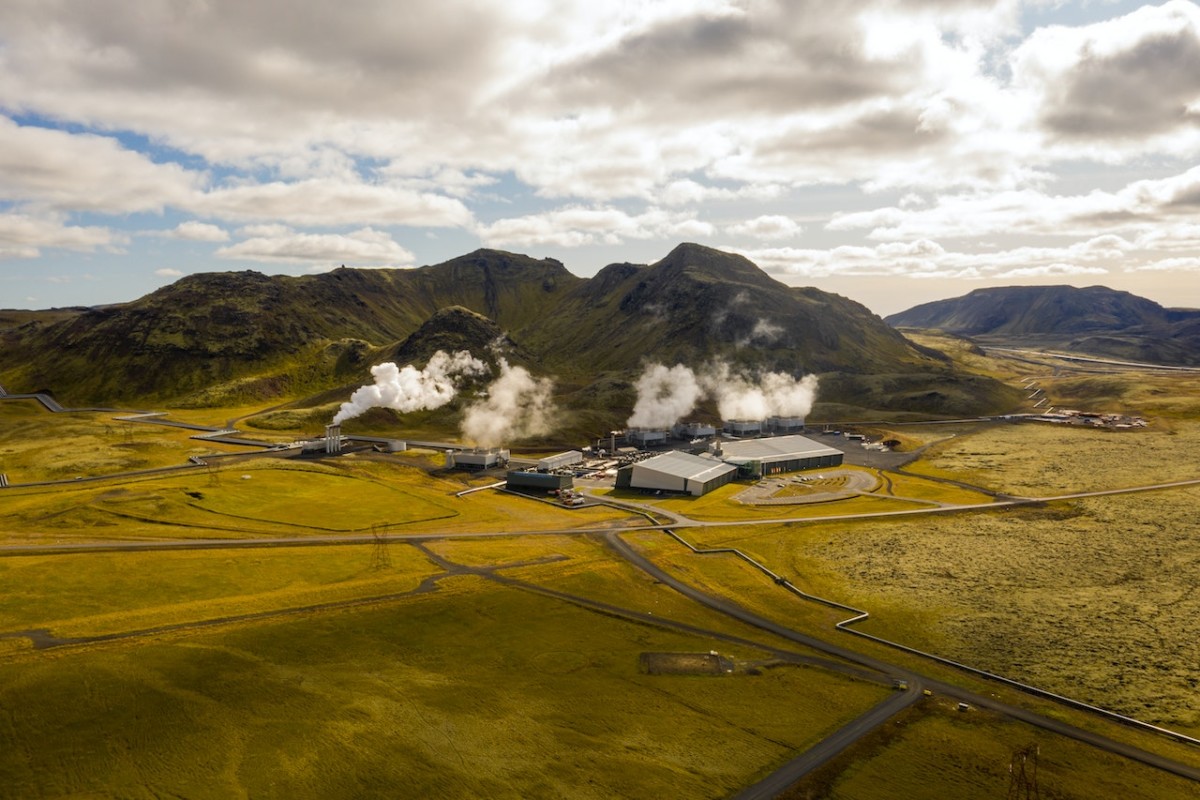Is Geothermal Energy Renewable or Nonrenewable
Defining Geothermal Energy
Some people argue that it is a renewable resource, while others maintain that it is nonrenewable. So, what is the truth? Is geothermal energy renewable or nonrenewable? The answer to this question depends on how you define renewable energy. Generally speaking, renewable energy is defined as energy that comes from a source that is not depleted when used.
Geothermal energy is a type of renewable energy that comes from the heat of the Earth. It can be used to generate electricity or to heat and cool buildings. Geothermal energy is a clean and sustainable resource that can help to reduce greenhouse gas emissions making it a clean energy. There are many geothermal power plants around the world, but the potential for geothermal energy is still largely untapped. Now let’s answer the question: Is Geothermal Energy Renewable or Nonrenewable?
Geothermal Energy Renewable or Nonrenewable
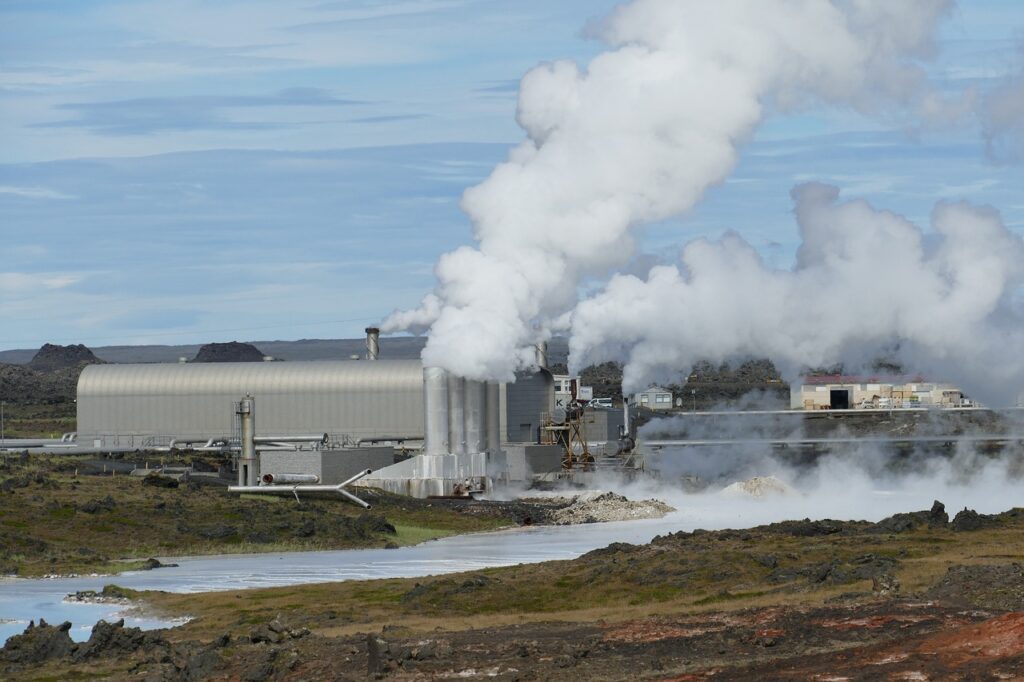
Geothermal energy is a type of renewable energy that is generated by the heat of the Earth’s core. The word “geothermal” comes from the Greek words “geo,” meaning earth, and “therme,” meaning heat. Geothermal energy has been used for centuries to heat homes and to generate electricity. In some countries, geothermal energy provides a significant amount of the electricity that is used.
Geothermal energy can also be used to generate electricity. Geothermal power plants use geothermal heat extracted from underground to convert water into steam. Which is then used to drive turbines that generate electricity.
Is Geothermal Energy Renewable or Nonrenewable
The Earth’s Heat as a Renewable Resource
Geothermal energy is a renewable resource because it is derived from the heat of the Earth’s core. Which is a never-ending source of energy. The heat from the Earth’s core is constantly being replenished by the radioactive decay of elements in the mantle and core. Therefore geothermal energy is sustainable because it can be continually used without depleting the Earth’s resources.
Geothermal Power Plants
Geothermal power plants are a type of renewable energy facility that generates electricity by using the Earth’s heat. The steam produced by the heat is used to turn a steam turbine, which then spins a generator to create electricity. The steam or hot water is then injected back into the ground to be used again.
Geothermal power plants can be built in areas where there is geothermal activity, such as near volcanoes or hot springs. This type of renewable energy is environmentally friendly because it doesn’t produce air pollution or carbon emissions. They have very low emissions of greenhouse gases and are therefore considered to be environmentally friendly.
Although geothermal power plants require a large upfront investment, they have low operating costs and can generate electricity for decades. This makes geothermal power an attractive option for countries looking to transition to renewable energy sources.
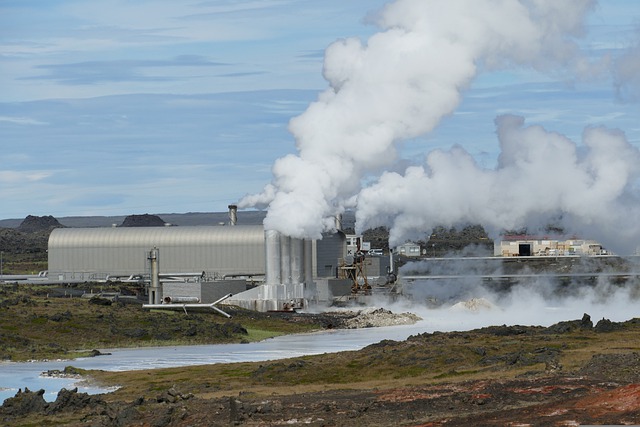
They are also very efficient, with a typical geothermal power plant having an efficiency of around 80%. Geothermal power plants are not susceptible to droughts or other weather-related issues that affect solar and wind farms.
Is Geothermal Energy Renewable or Nonrenewable
High Geothermal Potential
Despite these advantages, geothermal power plants require significant upfront investment costs. In order to be economically viable, geothermal power plants must be built in areas with high geothermal potential such as near geysers or hot springs. These areas are often remote and difficult to access, which can further increase costs.
There are some drawbacks to using geothermal energy.
The first major issue is that the process of drilling and extracting geothermal energy can cause earthquakes. Drilling deep enough to reach high-temperature reservoirs of water can crack rock layers, which can then move and settle within the reservoir. Geothermal energy is often thought of as a renewable resource, but there are some drawbacks to using it.
One issue is that geothermal energy is only available in certain areas, such as near tectonic plate boundaries or volcanic regions. This limits its use to a small percentage of the population. Additionally, geothermal energy can only be used for electricity generation or space heating and cooling; it cannot be used for transportation or other purposes.
Geothermal Resources in the United States
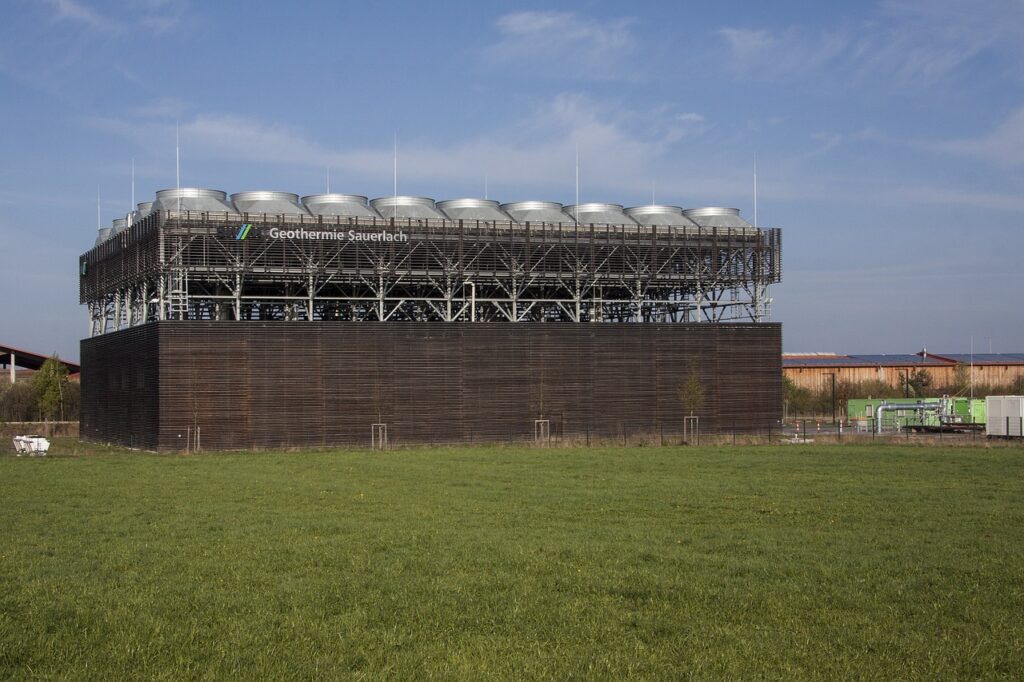
Geothermal resources in the United States are found in abundance in the western states, Alaska, and Hawaii. There are an estimated 3,000 MW of geothermal power potential in the country. The US Geological Survey (USGS) estimates that there is a mean of 30 GW of geothermal energy available just in the top 6 kilometers of the Earth’s crust.
This heat can be used for direct heating or to generate electricity through a variety of methods, including dry steam, flash steam, and binary cycle power plants. Geothermal power generation has the potential to provide a significant amount of clean, renewable energy. A geothermal power plants can be designed to operate indefinitely without any fuel or carbon dioxide emissions usually associated with nonrenewable energy sources.
Geothermal energy is considered a renewable resource because the water used to generate electricity is returned to the ground to be used again. There is no net consumption of water when using a geothermal system and no emissions are released into the atmosphere, making it a very eco-friendly option.
Is Geothermal Energy Renewable or Nonrenewable
What is Geothermal Dry Steam
Geothermal dry steam is a type of geothermal power plant where steam is used to rotate a turbine that generates electricity. The steam is produced by heat from the earth’s hot water and rocks. Dry steam plants are the oldest type of geothermal power plant and were first used in California in the early 1900s.
The thermal energy for a dry steam power plant comes from the heat of rocks and water found a few miles below the Earth’s surface. This heat creates superheated water vapor or “dry steam” that can be used to drive turbines and generate electricity.
Dry steam plants are relatively simple and have been operational for over 100 years. They are typically located in areas with high geothermal activity, like The Geysers in California – the largest dry steam field in the world.
What is Geothermal Flash Steam
Geothermal flash steam plants use geothermal water that is heated by hot rocks deep underground. The water turns to steam and rises to the surface. The steam is used to turn a turbine, which generates electricity. Geothermal flash steam plants are the most common type of geothermal power plant.
They are often built in areas without high geothermal potential. They can also be built in areas with low geothermal activity, but require more complex drilling and extraction techniques.
What is a Geothermal Binary Cycle Power Plant
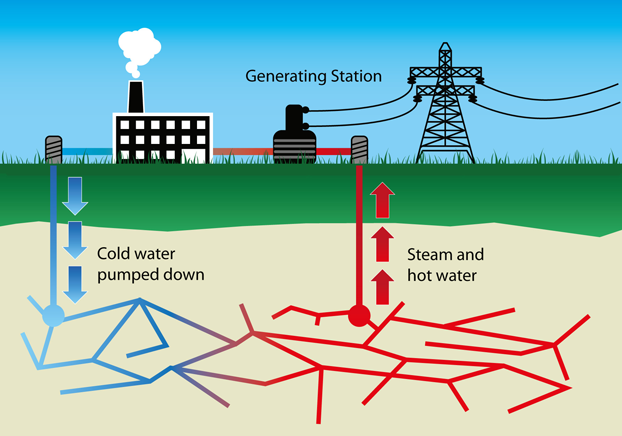
Geothermal binary cycle power plants are a type of geothermal power plant that uses the heat from hot water or steam to produce electricity. The heat is used to boil a working fluid, which turns a turbine that drives an electrical generator.
Binary cycle plants are most often used in areas where there is a high temperature difference between the water or steam and the surrounding rocks. This temperature differential is what drives the turbine and generates electricity. The most common geothermal fluid is water. Water is used because it is cheap and readily available. To use steam as a working fluid, the steam must be condensed before use to power the turbine.
The use of binary cycle power plants has increased in recent years as technology has improved and more countries look for ways to generate renewable energy. These plants can provide a steady source of electricity with minimal environmental impact.
Is Geothermal Energy Renewable or Nonrenewable
Geothermal Heat Pumps
Geothermal heat pumps are a type of renewable energy system that uses the earth’s natural heat to provide heating, cooling, and hot water. In fact geothermal heat pumps are one of the most efficient and environmentally friendly ways to heat and cool your home or business.
Geothermal heat pumps work by circulating a fluid through a loop of underground piping . Hence the fluid absorbs heat from the ground and brings it into your building where it is used for heating or cooling. The fluid then returns to the ground after completing a cycle through the system.
The fluid absorbs the earth’s natural heat, which is then used to warm the air in your home or business. In the summer, the process is reversed, and the geothermal system removes heat from your home or business to keep it cool. Geothermal systems are very clean, with no harmful emissions.
Geothermal heat pumps are extremely efficient because they take advantage of the earth’s constant temperature. The average efficiency of a geothermal system is about four times that of a conventional heating or cooling system. Geothermal heat pumps have been used for decades. In fact, one of the first geothermal systems was installed in 1891 at The Fairmont Hotel in San Francisco.
Where are the Worlds Geothermal Reservoirs
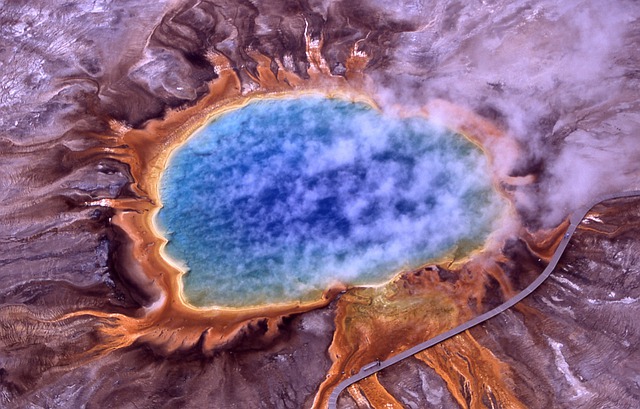
While the heat from the earth’s core is constant, the steam and hot water that we harness for geothermal energy can eventually be depleted. That’s why it’s important to know where the world’s geothermal reservoirs are located.
There are three main types of geothermal reservoirs: hot dry rock, hydrothermal convection, and magmatic systems. Hot dry rock systems are found in areas where there is granite or similar types of rocks deep underground.
These rocks can get heated up by the earth’s heat, but they don’t have enough water to turn into steam. Hydrothermal convection systems are found in areas with volcanic activity. This is because the water is heated by molten rock deep underground and then rises up through cracks in the Earth’s surface.
A magmatic system is a naturally occurring heat source that can be used to generate electricity through geothermal plants. Magmatic systems are found in areas where there is recent or ongoing volcanic activity, such as Iceland, Italy, and New Zealand. The heat from these systems can be harnessed to produce electricity, which makes them a renewable resource.
There are two types of magmatic systems: active and dormant. Active systems are currently producing heat, while dormant systems are not. The heat from an active system can be captured using a process called flash steam power generation. This involves pumping water into the ground where it is heated by the magma, then converted into steam that drives a turbine to generate electricity.
Dormant systems can also be used to generate electricity, but this requires drilling into the rock to get to the heat source.
Is Geothermal Energy Renewable or Nonrenewable
Geothermal Heat Exchanger
Geothermal heat exchangers are a type of renewable energy system that utilizes the Earth’s natural heat to produce electricity. Furthermore geothermal power plants use steam turbines to generate electricity, while geothermal heating and cooling systems use the ground as a heat source or sink.
Geothermal heat exchangers are one of the most efficient ways to utilize renewable energy, as they have a very high rate of heat transfer and require little maintenance. In addition, geothermal heat exchangers can be used in a variety of applications including space heating, domestic hot water, agricultural drying and more.
There are two main types of geothermal heat exchangers: direct and indirect. Direct systems use the ground as a source of heat, while indirect systems use the ground as a heat sink.
Is Geothermal Energy Renewable or Nonrenewable
Geothermal Energy and the Environment
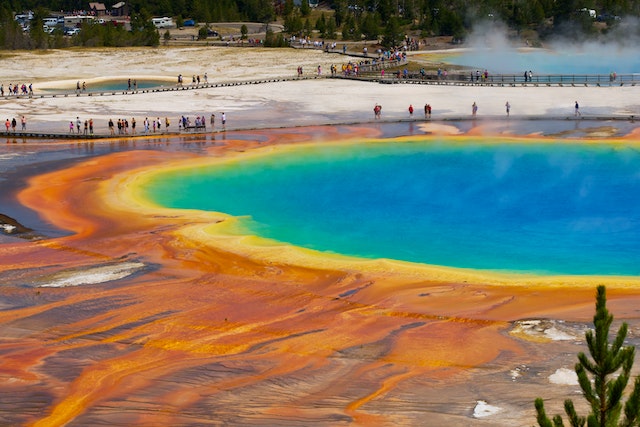
The environmental impacts of geothermal energy are relatively low. There is no air pollution associated with geothermal power plants, and the plants have a small footprint. In addition, geothermal power plants can operate for 24 hours a day with little to no water consumption. In comparison, fossil fuel plants must be powered down completely during shutdown periods.
Geothermal energy development has historically been limited by the availability of sites with high enough heat flow to generate electricity. This heat is used to turn water into steam, which then turns turbines and generates electricity.
Why is Geothermal Energy Considered a Renewable Resource
Let’s recap, geothermal energy is considered a renewable resource because it harnesses the Earth’s internal heat, which is continuously produced by natural processes deep within our planet. Unlike finite resources like coal or oil, this heat does not run out or get depleted over time. Instead, it is constantly replenished by the radioactive decay of minerals and the original heat from the Earth’s formation. Thus, because of its enduring and sustainable nature, geothermal energy is classified alongside wind, solar, and hydroelectric power as a renewable source of energy.
Is Geothermal Energy Renewable or Nonrenewable
The Future of Geothermal Energy
Firstly as we draw to a close, I do hope that you have found this article “Is Geothermal Energy Renewable or Nonrenewable” informative, if so please consider sharing it, thank you.
The future of geothermal energy is looking bright. As the world looks for ways to move away from fossil fuels, geothermal energy is becoming increasingly attractive. Geothermal energy is one of the major renewable resources, meaning it can be used over and over again without damaging the environment.
There are a few challenges that need to be addressed before geothermal energy can become more widely used. One is the cost of drilling the wells needed to tap into the earth’s heat. Another is finding ways to use geothermal energy in a way that doesn’t impact the environment.
Despite these challenges, there is a lot of potential for geothermal energy. With continued research and development, the cost of drilling wells and using geothermal energy will continue to fall. And as we learn more about how to use this renewable resource without harming the environment, its popularity will only continue to grow.
Recent Posts
Understanding Energy and Electricity: The Power For Progress
Energy and Electricity Energy and electricity are integral components of modern life, powering everything from homes and businesses to transportation and communication. Without them, the...
The Future of Wind Energy The future of wind energy is set to play a critical role in addressing global energy needs while combating climate change. As renewable energy sources like wind and...


